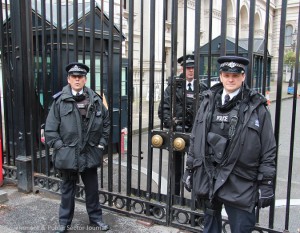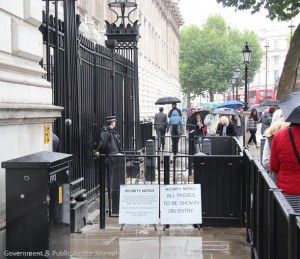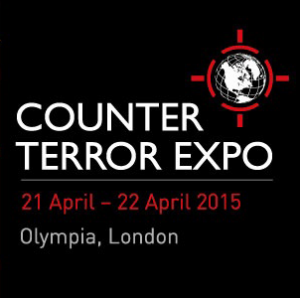
Counter Terror Expo 2015 comes at a time when terrorism and unconventional threat levels across much of the world are at heightened levels. Recent events in France and Nigeria, to pick just two, have accentuated the myriad of different threats that have proliferated since the 1990s. And as the threats have increased and mutated, so the responses of countries, government agencies, and non-government actors have had to change almost beyond all recognition.
Counter Terror Expo 2015 covers these key terror threat areas under one roof, and uses the underlying principles that form the “UK’s Strategy for Countering International Terrorism”, to link everything. The four principles that make up what is also known as the also known as the “Contest Strategy” are: “Pursue”, “Prevent, “Protect”, and “Prepare”.
- Pursue: to stop terrorist attacks;
- Prevent: to stop people becoming terrorists or supporting terrorism;
- Protect: to strengthen protection against a terrorist attack;
- Prepare: to mitigate the impact of a terrorist attack
At Counter Terror Expo 2015, the overall scene – the “intelligence picture” – is set by the “World Counter-Terror Congress”. Presentations on topics as diverse as communications security in a “post-Snowden Age”, use of digital media by radical groups, and the impact of new terror tactics are joined together under the four “Contest Strategy” headings. More detailed intelligence updates on Al Qaeda, ISIS, Boko Haram, to name just some of the terror groups that are most frequently reported on in the media. Supporting briefings and presentations are provided by the Quillam Foundation, RUSI, University College London, the Metropolitan Police and the Home Office.The cyber terror threat is covered extensively in the exhibition’s “Cyber Threat Intelligence” strand. The past few months have given much to consider here. From the hacking of Sony Pictures – possibly by North Korean agencies – through to the hacking of the US Defense Department’s Central Command (which had its Twitter and YouTube feeds taken over by a group claiming to be aligned with ISIS), this threat has seen massive changes of late. And it isn’t just the state-on-state threats (also seen in hostile Russian cyber attacks on neighbours) that present severe challenges. The use of cyber techniques by criminal groups is an equal challenge to law enforcement agencies as well as commerce. The “Cyber Threat Intelligence” strand sees key updates from UK Government Communications HQ, Europol, and the UK’s National Cyber Crime Unit, backed up by “coal face” presentations from key industry leaders in the area.
The threat to infrastructure from terror groups has been a constant, but growing one. From threats to oil/petrochemical facilities (such as seen in Algeria in 2012, as well as in Nigeria and Iraq), to potential attacks on nuclear power stations, the sector presents a range of opportunities to terror groups, and thus risks to governments. So taking the “Four P’s” as the guideline, the “Critical National Infrastructure” seminar ranges across the options for identifying threats as well as solutions. Vital concept updates are given by the UK Home Office’s Security and Counter Terrorism department, GCHQ, NATO, and the Organisation for Security and Cooperation in Europe. To provide pin-point clarity about exactly what this can mean on the ground, the seminar also has feature presentations on the challenges of security at sporting facilities such as Wembley Stadium (as an example of the mass of such facilities that can seat close to 100,000 spectators), and the re-built New York World Trade Center.
Furthermore, the myriad of threats aren’t just focussed against fixed infrastructure facilities: transport networks are a regular target for terror groups’ plans and attacks. From the 9/11 aircraft hijackings, through the 2004 Madrid Atocha train bombings to the similar attack on the London Underground in 2005, transport presents ideal targets for terror groups. Although aircraft are the highest profile targets, it is often transports means such as buses that see the most attacks – Boko Haram and Al Shabab have both carried out shocking fatal attacks on buses in Nigeria and Kenya recently. But the Transport Security Live Strand at Counter Terror 2015 will cover all these areas, with key addresses from the UK’s Civil Aviation Authority, the Department for Transport, and industry players such as Boeing.
Lastly, Counter Terror Expo 2015 covers that area whose importance springs into life when terrorists strike or “things go wrong”: the Blue Light Services, the fire and ambulance/medical services. The Ambition seminar covers preparing Blue Light Services for the scale and range of terror attacks, and the building of resilience in the services. On top of this, the manner of response of responders to high scale terror attacks – whether a “Mumbai-style” gun attack, or a chemical/biological attack is also covered by speakers from leading UK and European First Responder organisations.
Ideally, governments and companies wouldn’t have to plan for such events. But the past decades have shown that – unfortunately – the risks and range of terror threats have grown ever higher. Nobody can ignore contingency plans for terror/terror-style attacks, and the recent attack on the Charlie Hebdo magazine shows that the risks to non-government bodies can be as high as those for state entities. This is why Counter Terror Expo 2015 aims to provide context, analysis and answers to the vast topic of counter-terror.>
With 300+ suppliers, from leading UK and international primes to specialist SMEs will be exhibiting their latest technology and equipment for law enforcement and security personnel. Some of the leading and innovative exhibitors will include Winkelmann UK, Tactical Electronics LLC, Alford Technologies, Digital RF and Chemring EOD which manufactures Explosive Ordnance Disposal and Counter-IED equipment; Geoquip Worldwide, Terrafix Ltd and Neosoft, producers of secure communications equipment; Counter Measure Systems which specialises in police and special forces equipment and training; ICM X-Ray which produces groundbreaking miniaturised portable X-ray equipment; and RFA Security, providers of explosive detection and sniffer dogs.
Unmanned vehicles are playing an increasingly important role today and CTX exhibitors include ICOR Technology which manufactures the CALIBER® family of robots, offers five different sized platforms providing remote capabilities for SWAT, EOD and Hazmat teams. iRobot’s unmanned ground vehicles are designed to reduce the risk to personnel, operate downrange, report data and deliver predictive intelligence. Unmanned ground vehicles are also a speciality of NIC Instruments, which develops the lightweight First Responder that can be configured to the needs of specific missions. The unit can easily be repaired in the field.
Visit www.counterterrorexpo.com






Recent Comments